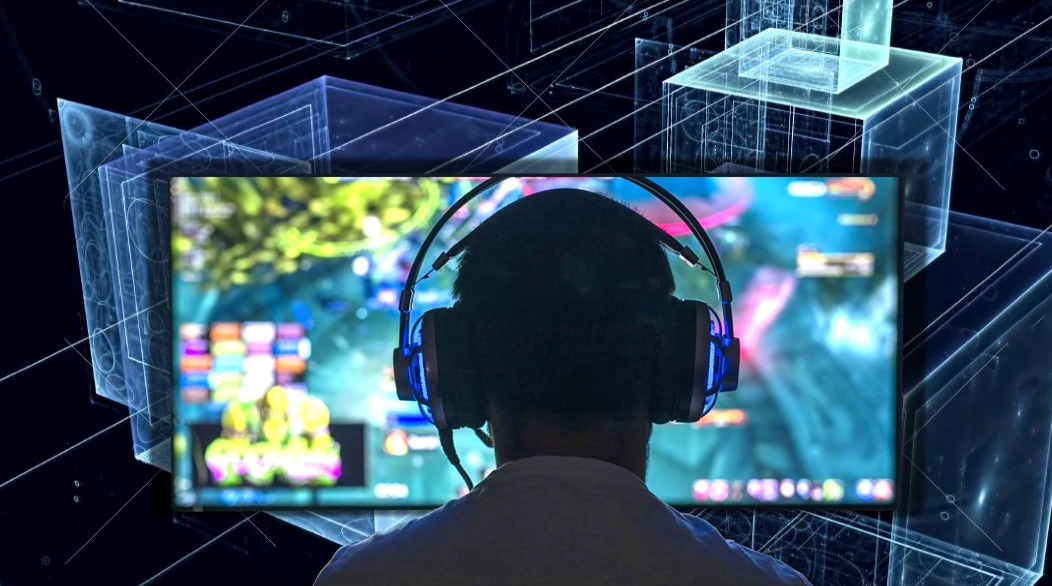The future of crypto gaming and how they will change the gaming industry

A new era of blockchain-based games
Blockchain technology is developing at a fairly rapid pace and this opens up even more opportunities in the development of the gaming sector. The emergence of cryptogames offers the opportunity to create games that are fully decentralized and independent of centralized gaming platforms. Blockchain games were invented only a few years ago, but now their popularity is growing. They do not use a central server to store their data, instead relying on blockchain technology, which is more secure and progressive. This section is an informative introduction to what cryptogames are and how they work. Crypto gaming is a video game that uses blockchain as an integral part of the gameplay. Most often, they are intended to direct players to explore and experiment with various applications of blockchain technology.
What are some useful features and benefits of blockchain-based games?
Blockchain games are an exciting new type of game that is based on blockchain technology. The game can be free, but each user has the ability to make in-game purchases using special tokens that can be spent on in-game items or other in-game privileges. There are some features and benefits that distinguish crypto gaming from traditional games:
- Users can use their in-game tokens to exchange with other players so they can get virtual items or abilities they need.
- Crypto-games are there to be played and enjoyed, but infringement is inevitable in the long run. The good news is that the developer has complete control over the content and gameplay.
- When you make purchases with your tokens, you don't have to pay a transaction fee.
The importance of in-game items in crypto gaming
In-game items such as weapons, armor, and rare collectibles have an important component to all crypto gaming because they create an opportunity for players to showcase their achievements, a sense of accomplishment, and are an added incentive to keep playing. Connoisseurs of fantastic and engaging games will appreciate the reward system, which will also attract even more new players.
What are the most promising cryptocurrency games?
Cryptocurrency games, as a type of gambling, are rapidly gaining popularity, thus increasing the demand for top games like Satoshi's Treasure and CryptoKitties. These are prime examples of how modern cryptocurrency games are being used to generate revenue. There are many different cryptocurrency games currently on the gaming market. Some of them have existed for quite a long time, while others have appeared quite recently. No less popular crypto game at the moment is Satoshi's Treasure. Since its launch, since March 2018, the game has generated over $1 million in revenue.
How Blockchain technology is shaping the future of mobile gaming
Blockchain technology is shaping the fantastic future of mobile gaming. A fairly new form of currency involves the purchase of in-game items, resulting in them being sold for real money. Blockchain technology has been around for quite some time, but only in the last few years has it begun to develop rapidly. The reason for this prolonged development is that the technology still seems very difficult for the general public to understand and use. The rapid growth in popularity and the emergence of detailed information about blockchain creates an opportunity for developers to implement this technology in their games, which as a result allows an increase in the flow of income, thereby providing gamers with significantly more opportunities.
What are the predictions for cryptocurrency games?
In order to create a successful, exciting cryptogame, first of all, it is important to be on the same page with your audience, understand and understand what they want and what they are wary of. You need to determine how much time the user is willing to spend on your game, which allows you to create a clear picture of their point of view from the visual design and monetization side of the gameplay. When a developer has all this information, it is much easier to create a successful crypto game, thereby making their regular and new users happy. At this stage of the game market, there are many games that are based on blockchain technology, like CryptoKitties, Etheremon or Etherbots. As blockchain games grow in popularity, it is likely that we will see more projects of this type, and in addition with new features that will be introduced in these games, such as AR or VR to create an even more immersive experience. The future of cryptocurrency games is still unclear. But they are a key part of the future of the gaming industry. New technologies in the cryptocurrency market Bitcoin and Etherium are having a huge impact on the gaming industry. In the future, cryptocurrency could be used as a currency for games, which could eventually lead to significant changes in the gaming market. In addition, users will be able to use bitcoins for in-app purchases and new games. New ideas include exclusive access to games that are only available for a limited time. Also developers can create and sell games exclusively through cryptocurrency wallets. This would allow game developers to focus on their games without worrying about other aspects of game sales. ServReality offers crypto game development according to all the latest gaming trends and updates. After all, it is important to consider not only the visual component, but also the inclusion of new attractive features and tools.

